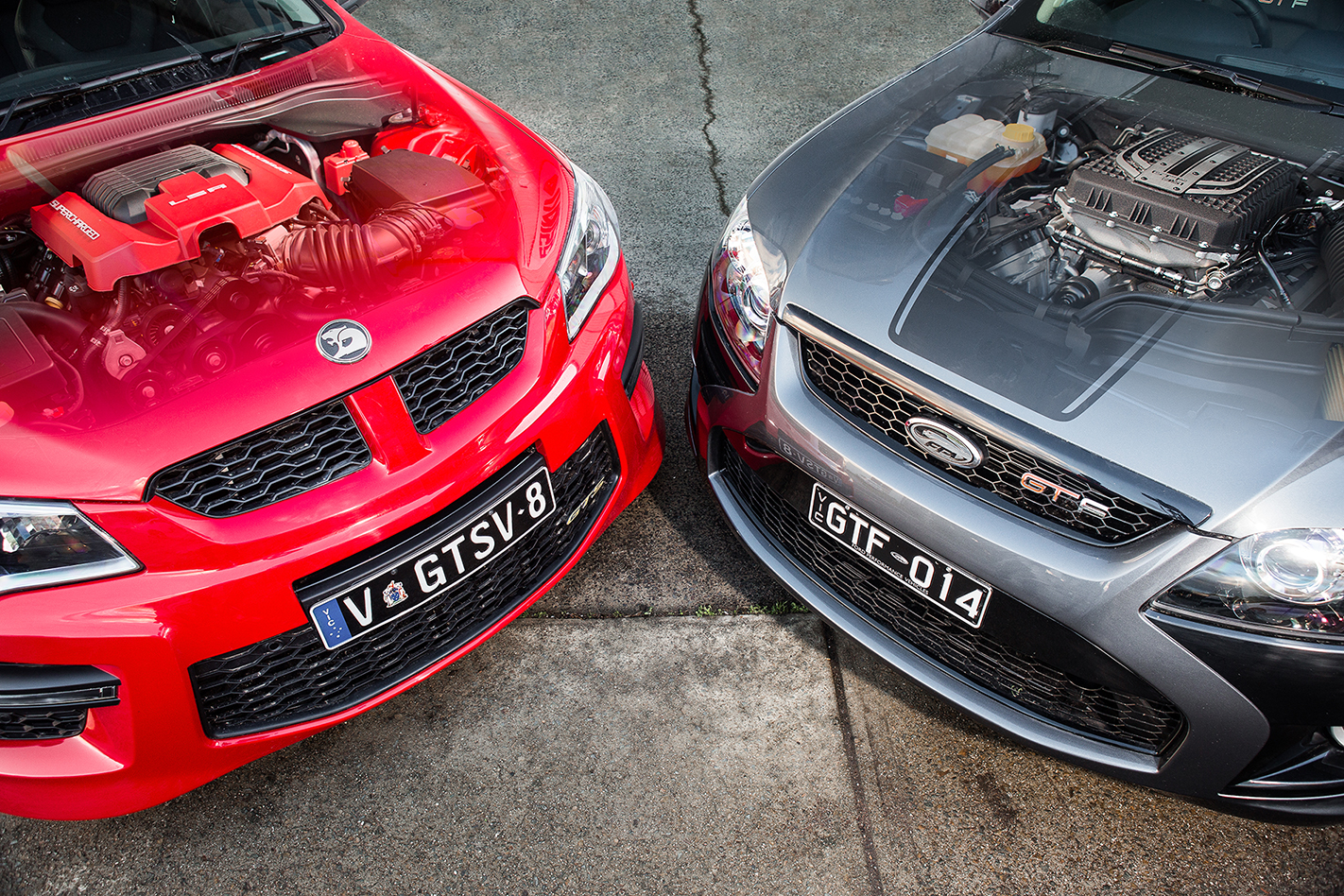This story was originally published August 12, 2014.
When Wheels dyno-tested the HSV GTS and FPV GT-F in July 2014 in an attempt to award the title of Australia’s most powerful car, controversy followed.
Both cars completed three runs at VCM Performance in identical conditions on the same day, and it was the HSV that triumphed, producing a maximum figure of 330kW to the FPV’s 311kW. FPV wasn’t happy, and neither were Ford fans.
To settle the argument, we devised a definitive re-test.
The same cars were used, both were run on two separate dynos, in the same conditions on the same day, and both cars were six-speed automatics. But we went even further to ensure accuracy.
FPV and HSV had engineers on hand, both companies officially confirmed their cars were standard specification and Wheels even employed a qualified and independent engineer to oversee both tests, and both manufacturers.
Every variable was controlled by professionals, from tyre pressures to strapping to ambient air temperature.
The tests took place at two of Australia’s most reputable chassis dynos, Herrod Motorsport and Dyno Dynamics, and to extract a maximum power figure, each car was run until its performance peaked, plateaued and dropped.
In short, without ripping the engines out, this test was as accurate and fair as possible. And it’s a test that produced some surprising results.
On both dynos, the FPV decimated the HSV, producing a peak figure of 323.7kW at Herrod and 343.3kW at Dyno Dynamics. The HSV produced 306.7kW and 322.1kW respectively.
These numbers flaunt the HSV’s paper advantage, showing the FPV is Australia’s true power king, by a clear average margin of 19.1kW.
So why the different result compared to the first test?
Even though they’re both V8s, the two cars produce their power in very different ways. Where the big 6.2-litre supercharged HSV hit its peak power almost immediately on both dynos, the smaller 5.0-litre FPV needed twice as many runs to produce its maximum figure.
The reason for this is the GT-F’s temperamental transient overboost, which can provide an additional 15 percent of power, but only when the engine is in its optimal operating window.
“For transient overboost to be effective, it runs off manifold temperature, so we need consistent temps of about 50-60 degrees,” GT-F project manager Justin Capicchiano said.
“The GT-F is always between 351 and that additional 15 percent, but how much depends on the conditions.
“So you’re always in transient overboost, but you’ll never go below that 351kW figure, which is why we put 351 on the side of the car.”
In the earlier test at VCM Performance, both cars were run just three times, meaning the GT-F didn’t tap into its overboost function.
As for any conspiracy theories about FPV or HSV boosting or tuning their cars to produce more power, forget it. Both Herrod Motorsport and Dyno Dynamics agreed the cars were completely stock.
Watch the video above to see how it all unfolded.






